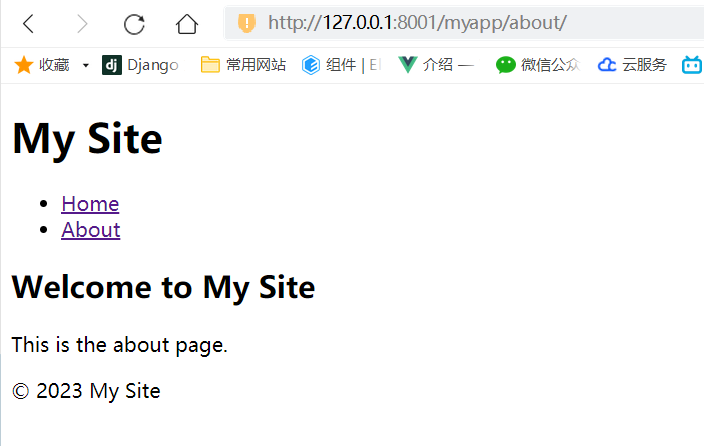在 Django 中,我们可以使用模板继承来避免代码的重复。模板继承是指我们可以在一个模板中定义一些公共的 HTML 代码,然后在其他模板中继承这个基础模板,并根据需要添加或覆盖一些内容。
通常情况下,我们会定义一个名为 base.html 的基础模板,其中包含网站的公共结构和样式,例如页眉、页脚、导航栏等。然后,在其他模板中,我们可以使用 extends 指令来继承这个基础模板,并在 block 块中添加或覆盖一些内容。
例如,下面是一个简单的 base.html 模板:
<!DOCTYPE html> <html> <head> <meta charset="UTF-8"> <title>{% block title %}My Site{% endblock %}</title> </head> <body> <header> <h1>My Site</h1> <nav> <ul> <li><a href="{% url 'home' %}">Home</a></li> <li><a href="{% url 'about' %}">About</a></li> <li><a href="{% url 'contact' %}">Contact</a></li> </ul> </nav> </header> <main> {% block content %} {% endblock %} </main> <footer> <p>© 2023 My Site</p> </footer> </body> </html>
在上面的模板中,我们定义了一个 title 块和一个 content 块。在 title 块中,我们使用了一个默认值 My Site,但是在其他模板中,我们可以通过覆盖 title 块来修改这个值。在 content 块中,我们使用了一个空块,但是在其他模板中,我们可以在这个块中添加内容。
例如,下面是一个简单的 home.html 和about.html模板,它继承了 base.html 模板,并在 content 块中添加了一些内容:
{% extends 'base.html' %}
{% block content %}
<h2>Welcome to My Site</h2>
<p>This is the home page.</p>
{% endblock %}
{% extends 'base.html' %}
{% block content %}
<h2>Welcome to My Site</h2>
<p>This is the about page.</p>
{% endblock %}
在上面的模板中,我们使用了 extends 指令来继承了 base.html 模板。在 content 块中,我们添加了一些 HTML 代码来显示欢迎信息和介绍信息。
使用模板继承可以让我们更轻松地维护网站的代码,减少代码的重复,并使网站的结构更加清晰易懂。
路由设置:
from django.urls import path from . import views urlpatterns = [ path('', views.index, name='index'), path('home/', views.home, name='home'), path('about/', views.about, name='about'), path('user_list/', views.user_list, name='user_list'), # ... 其他 URL 模式 ... ]
视图:
from django.contrib.auth.models import User from django.shortcuts import render # Create your views here. from django.http import HttpResponse def index(request): return HttpResponse("Hello, world. You're at the index.") def home(request): return render(request, 'home.html') # return HttpResponse("This is the home page.") def about(request): return render(request, 'about.html') # return HttpResponse("This is the about page.") def user_list(request): users = User.objects.all() context = {'title': 'user list', 'users': users} return render(request, 'myapp/user_list.html', context)

